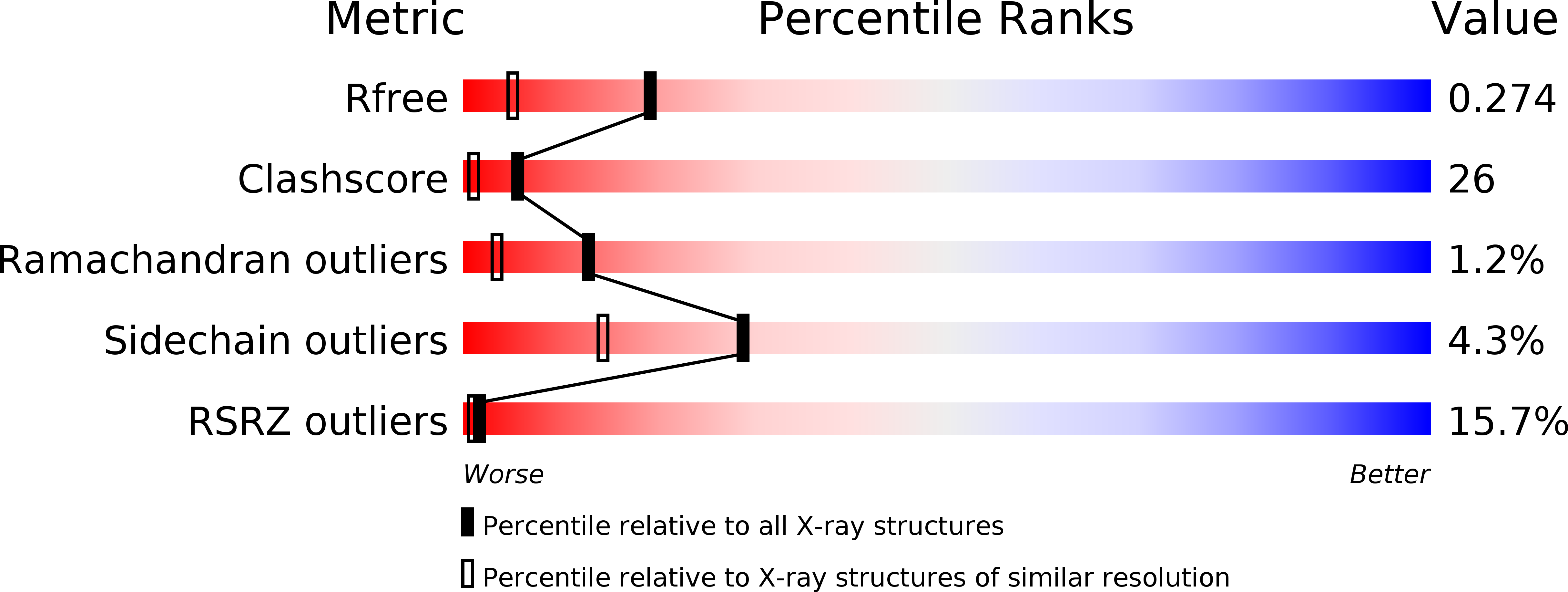Structure of uPAR, plasminogen, and sugar-binding sites of the 300 kDa mannose 6-phosphate receptor
Olson, L.J., Yammani, R.D., Dahms, N.M., Kim, J.-J.P.(2004) EMBO J 23: 2019-2028
- PubMed: 15085180
- DOI: https://doi.org/10.1038/sj.emboj.7600215
- Primary Citation of Related Structures:
1Q25 - PubMed Abstract:
The 300 kDa cation-independent mannose 6-phosphate receptor (CI-MPR) mediates the intracellular transport of newly synthesized lysosomal enzymes containing mannose 6-phosphate on their N-linked oligosaccharides. In addition to its role in lysosome biogenesis, the CI-MPR interacts with a number of different extracellular ligands at the cell surface, including latent transforming growth factor-beta, insulin-like growth factor-II, plasminogen, and urokinase-type plasminogen activator receptor (uPAR), to regulate cell growth and motility. We have solved the crystal structure of the N-terminal 432 residues of the CI-MPR at 1.8 A resolution, which encompass three out of the 15 repetitive domains of its extracytoplasmic region. The three domains, which exhibit similar topology to each other and to the 46 kDa cation-dependent mannose 6-phosphate receptor, assemble into a compact structure with the uPAR/plasminogen and the carbohydrate-binding sites situated on opposite faces of the molecule. Knowledge of the arrangement of these three domains has allowed us to propose a model of the entire extracytoplasmic region of the CI-MPR that provides a context with which to envision the numerous binding interactions carried out by this multi-faceted receptor.
Organizational Affiliation:
Department of Biochemistry, Medical College of Wisconsin, Watertown Plank Road, Milwaukee, WI 53226, USA.

















